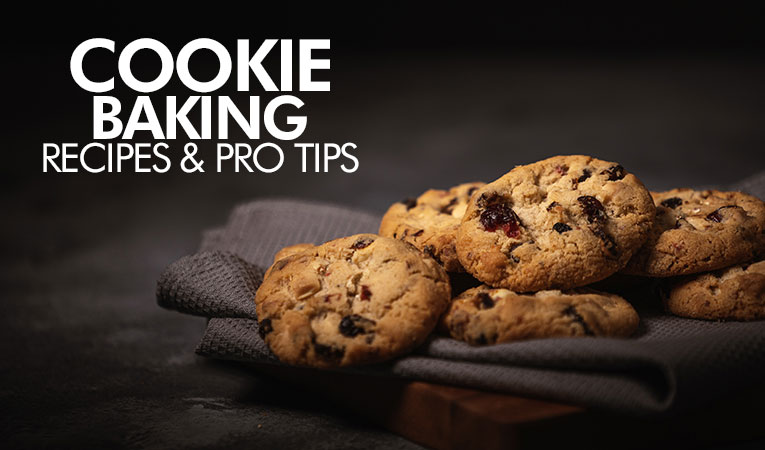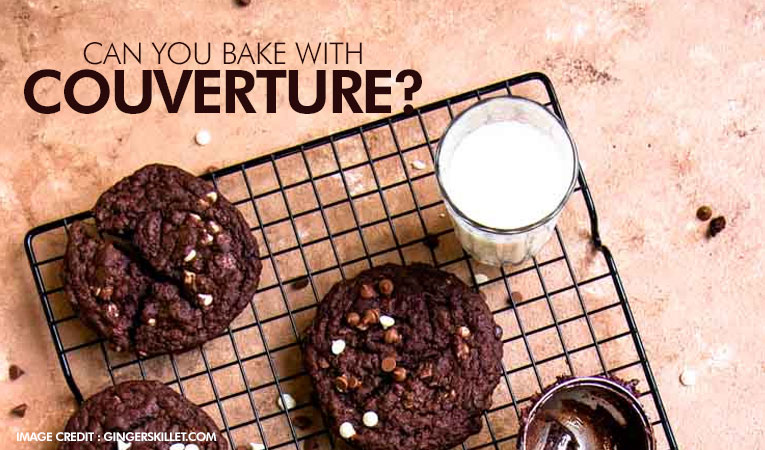How to use Couverture Chocolate for baking at Home?
01-05-2025
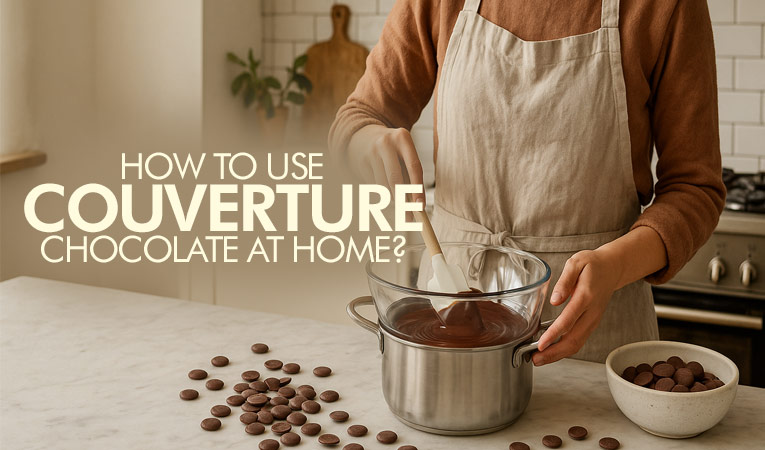
Couverture chocolate is every baker’s secret to luxurious, glossy, and intensely flavorful desserts. Rich in cocoa butter, this high-quality chocolate is known for its silky texture and rich taste that elevates even the simplest recipes. If you’re passionate about baking at home, learning how to use couverture chocolate is a game-changer. It offers a professional finish and superior taste, making your cakes, cookies, and ganaches taste like they came straight out of a gourmet patisserie.
Home bakers are increasingly turning to couverture chocolate not just for its taste but also for its versatility. Whether you're making a decadent mousse, a shiny chocolate glaze, or just want that perfect snap in your chocolate bark, couverture does the job like no other. Unlike regular compound chocolate, couverture melts beautifully and can be tempered to perfection for a glossy sheen and crisp texture.
In this blog, we’ll cover everything you need to know—from what couverture chocolate actually is to the best ways to melt and store it. We’ll also recommend top products available in India and point out common mistakes to avoid. Most importantly, we’ll walk you through how to use couverture chocolate at home, even if you’re just getting started with baking.
What is Couverture Chocolate?
Couverture chocolate is a premium-grade chocolate with a higher percentage of cocoa butter—usually between 31% and 39%—compared to regular chocolate. This elevated cocoa butter content gives it a smoother texture, better melting behavior, and a glossy finish once tempered.
Many people confuse couverture with regular dark or milk chocolate, but there are key differences. Regular chocolate can be used for snacking or cooking, but it doesn’t perform as well in baking or chocolate-making. Compound chocolate, on the other hand, uses vegetable fats instead of cocoa butter, which affects the taste and texture negatively. Knowing how to use couverture chocolate correctly ensures your desserts have that professional touch.
Couverture is ideal for tempering, molding, enrobing, and creating fine decorations. It's the go-to choice for pastry chefs and chocolatiers worldwide, and now with greater availability in India, home bakers can achieve the same high standards in their kitchens.

Best Uses of Couverture Chocolate in Baking
Couverture chocolate is an incredibly versatile ingredient that can transform everyday desserts into indulgent treats with a professional touch. Thanks to its high cocoa butter content, it melts more smoothly and yields a glossier, richer finish than regular chocolate. Whether you're a novice home baker or an experienced pastry enthusiast, understanding how to use couverture chocolate can help you experiment with a wide range of recipes, from baked goods to elegant confections. Its ability to enhance both texture and flavor makes it a favorite in kitchens around the world.
Cakes and Brownies: Couverture chocolate adds a luxurious richness and moist texture to chocolate cakes, sponge cakes, and dense brownies. It provides a more intense chocolate flavor and a melt-in-the-mouth finish that sets homemade bakes apart.
Cookies: Use chopped couverture chunks instead of standard chips to create gooey centers and soft pools of melted chocolate. Unlike compound chocolate, couverture retains a soft bite when cooled, making cookies more decadent.
Ganache and Truffles: Couverture is perfect for making smooth, glossy ganache and premium chocolate truffles. Its emulsifying qualities result in a silky texture and balanced flavor.
Mousse and Fillings: For airy mousse, layered desserts, or tart fillings, couverture ensures smooth blending, rich taste, and a velvety mouthfeel.
Mastering how to use couverture chocolate in these applications will significantly elevate the quality of your homemade desserts.

Melting and Tempering Tips
Melting and tempering couverture chocolate is a delicate yet essential skill for any baker who wants to achieve a smooth, glossy finish and the perfect snap in chocolate-based desserts. Because couverture contains a higher percentage of cocoa butter than regular chocolate, it’s more sensitive to temperature changes and requires careful handling. If not melted or tempered correctly, it can become grainy, dull, or even seize entirely. That’s why understanding how to use couverture chocolate through proper melting and tempering techniques is vital to getting professional-quality results at home.
Double Boiler Method: This is a gentle and reliable method. Place finely chopped couverture chocolate in a heatproof bowl set over a pot of simmering (not boiling) water. Stir continuously to melt evenly and avoid overheating.
Microwave Method: Ideal for quick melts, this method involves heating the chocolate in 15–20 second intervals, stirring between each burst. Be cautious—microwaves can easily scorch chocolate if not monitored closely.
Tempering Basics: Proper tempering involves melting the chocolate to a specific temperature, cooling it to form stable crystals, and then gently reheating it to working temperature. This ensures a shiny, firm finish and a satisfying snap.
Getting this process right is fundamental to mastering how to use couverture chocolate in molded chocolates, coatings, and decorations.

Storage Tips
Proper storage is crucial to preserving the quality, texture, and rich flavor of couverture chocolate. Because it contains a high percentage of cocoa butter, couverture is more sensitive to temperature, humidity, and odors compared to regular chocolate. If not stored correctly, it can easily develop fat or sugar bloom, losing its smooth texture and glossy finish. Whether you’re a home baker or professional, understanding how to use couverture chocolate includes knowing how to store it effectively.
Storage Conditions: Always store couverture chocolate in a cool, dry place with a stable temperature between 16°C to 20°C. Avoid exposure to direct sunlight or fluctuating temperatures. Refrigeration is not recommended unless absolutely necessary, as condensation can lead to sugar bloom—creating a dull, speckled surface on the chocolate.
Leftovers: After opening a pack, wrap the unused chocolate tightly in cling film or place it in an airtight container. Be sure to keep it away from strong-smelling items like spices, as couverture readily absorbs odors that can affect its flavor.
Shelf Life: When stored properly, couverture chocolate can last 12 to 18 months. However, for the best flavor and performance, it’s advisable to use it within 6 to 8 months of opening.
For a more detailed guide tailored to Indian climate conditions, read: How to Store Couverture Chocolate in India. Smart storage is an essential part of mastering how to use couverture chocolate in your home baking.
Product Recommendations
Choosing the right couverture chocolate can make all the difference in your baking results. Whether you're preparing ganache, truffles, or rich cakes, the quality and cocoa content of your chocolate greatly influence the taste, texture, and finish. If you're wondering how to use couverture chocolate at home and which product to start with, here are some trusted options widely available in India that cater to a range of baking needs and flavor preferences.

Callebaut 811 Dark Chocolate (54.5%) A go-to choice for many professional chefs, this dark couverture offers a balanced cocoa flavor with subtle hints of roasted coffee. It melts smoothly and is perfect for ganache, chocolate bars, and molded creations.
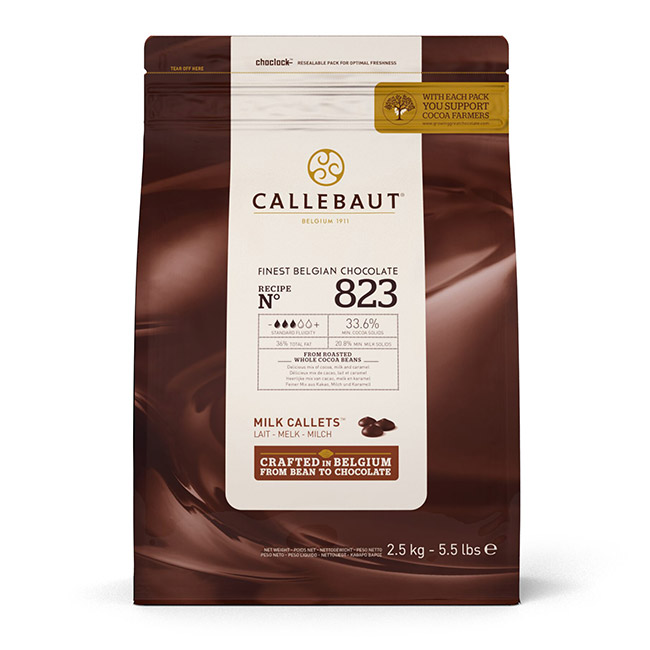
Callebaut 823 Milk Chocolate (33.6%) This premium milk couverture features a creamy texture with caramel undertones. It works beautifully in mousses, creamy desserts, or for a smooth, sweet ganache.
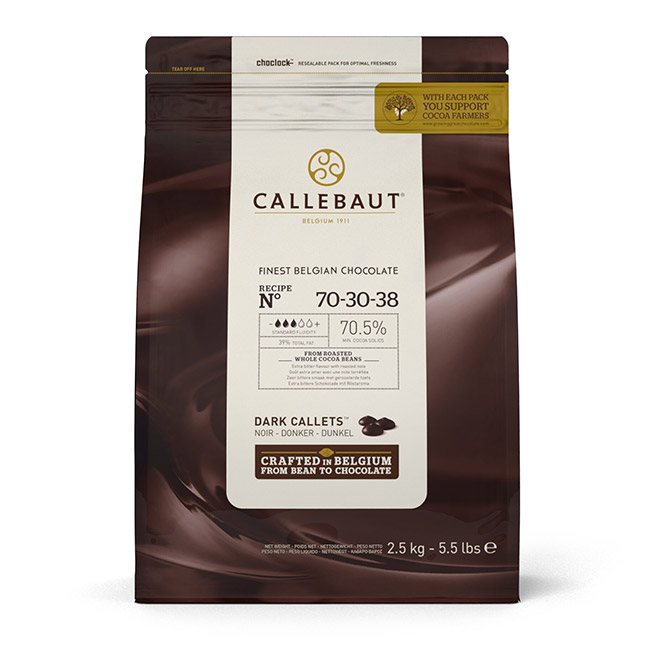
Callebaut 70% Dark Couverture Known for its intense cocoa hit and deep, rich flavor, this is a favorite for gourmet desserts. Use it for premium chocolate bars, sophisticated tarts, or luxurious glazing.
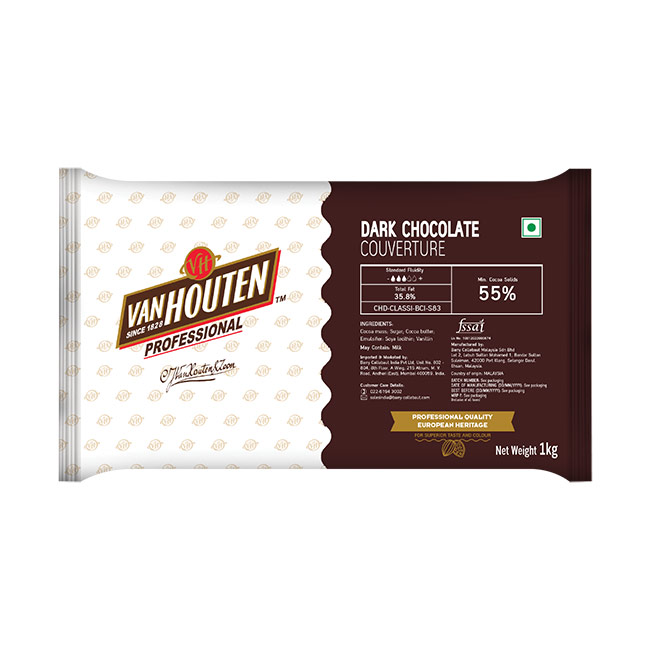
Van Houten 55% Dark Chocolate With deeper cocoa intensity and slightly bitter notes, this dark couverture is ideal for those who prefer bold flavors in truffles, dark ganache, or rich flourless cakes.
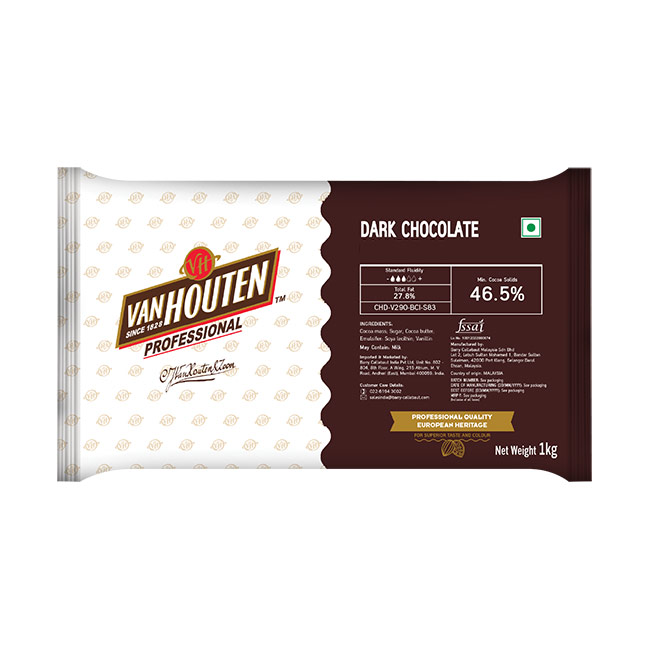
Van Houten 46% Dark Couverture Chocolate This versatile couverture delivers a moderately intense cocoa profile, ideal for cakes, brownies, and chocolate sauces. Its easy melting properties make it beginner-friendly.
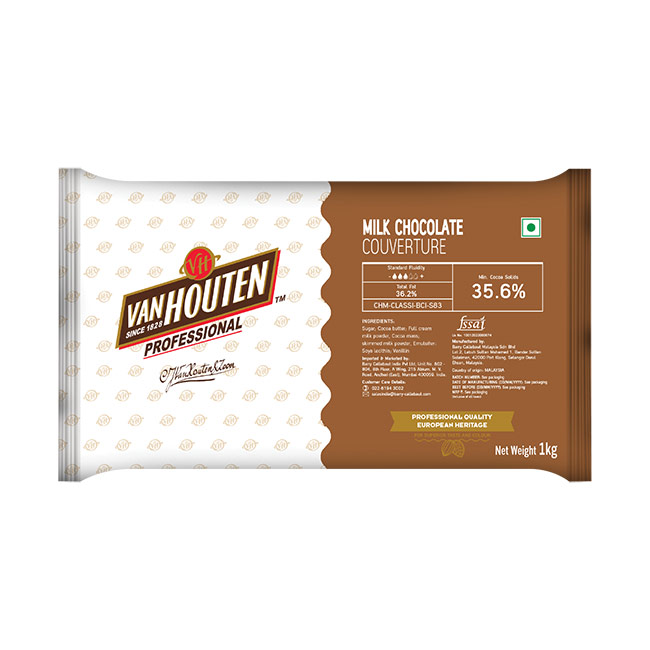
Van Houten Milk Couverture Chocolate A smooth, well-balanced milk couverture that's great for coatings, fillings, and molded chocolates. Its melt-in-the-mouth texture is perfect for creamy confections.
When learning how to use couverture chocolate, selecting the right product suited to your recipe is key to achieving exceptional results in both flavor and finish.

Common Mistakes to Avoid
Working with couverture chocolate can be incredibly rewarding, but it also requires precision and care. Many home bakers run into avoidable issues that can affect the quality, texture, and appearance of their final product. Whether you're a beginner or a seasoned baker, understanding these common mistakes is a crucial step in mastering how to use couverture chocolate effectively in your kitchen.
Overheating the Chocolate: One of the most common errors is applying too much heat. Couverture chocolate has a high cocoa butter content, which makes it melt smoothly—but also means it can scorch easily. Always melt it gently using a double boiler or in short microwave bursts, stirring frequently.
Allowing Water Contact: Even a single drop of water can cause your chocolate to seize, turning it into a lumpy mess. Ensure all your utensils and surfaces are completely dry before working with couverture. Avoid using wooden spoons or damp spatulas.
Skipping Tempering: Tempering is essential when using couverture for coating, molding, or dipping. Skipping this step can result in dull, soft chocolate that doesn’t set properly or lacks that satisfying snap. Use a thermometer to follow correct tempering temperatures.
Improper Storage: Leaving chocolate exposed to air, light, or fluctuating temperatures can lead to sugar or fat bloom. Always store it in a cool, dry place in an airtight container.
To avoid these pitfalls and learn more best practices, check out our detailed guide: FAQs About Couverture Chocolate – Answered.
Avoiding these simple mistakes will ensure that you get the most out of your experience as you learn how to use couverture chocolate successfully in your baking journey.
Conclusion
Couverture chocolate is a game-changer for home bakers seeking professional-quality results. In this blog, we explored everything you need to know about how to use couverture chocolate—from understanding what sets it apart, to the best ways to melt, temper, and store it. We also discussed its most popular applications in baking, such as cakes, brownies, cookies, ganache, truffles, mousse, and more. With its superior cocoa butter content, couverture chocolate offers unparalleled flavor, texture, and shine when used correctly.
We also covered essential melting and tempering techniques, storage tips to maintain its quality, and product recommendations from top brands like Callebaut and Van Houten. Most importantly, we highlighted common mistakes to avoid, such as overheating or skipping the tempering process, which can impact the end result.
Now that you’re familiar with the fundamentals of how to use couverture chocolate, you’re ready to elevate your home baking to a whole new level. Whether you're making a simple chocolate sauce or crafting artisan truffles, the right chocolate makes all the difference.
Ready to get started? Explore a wide selection of premium couverture chocolates and baking essentials on Bakerykart. With trusted brands and quality ingredients delivered to your doorstep, Bakerykart makes it easy for you to begin your couverture chocolate journey.
So go ahead, experiment, bake, and indulge in the art of fine chocolate. Your next show-stopping dessert is just one melt away.




